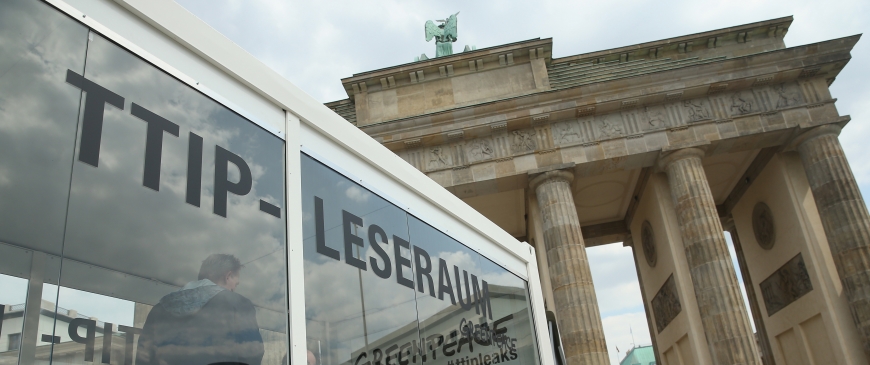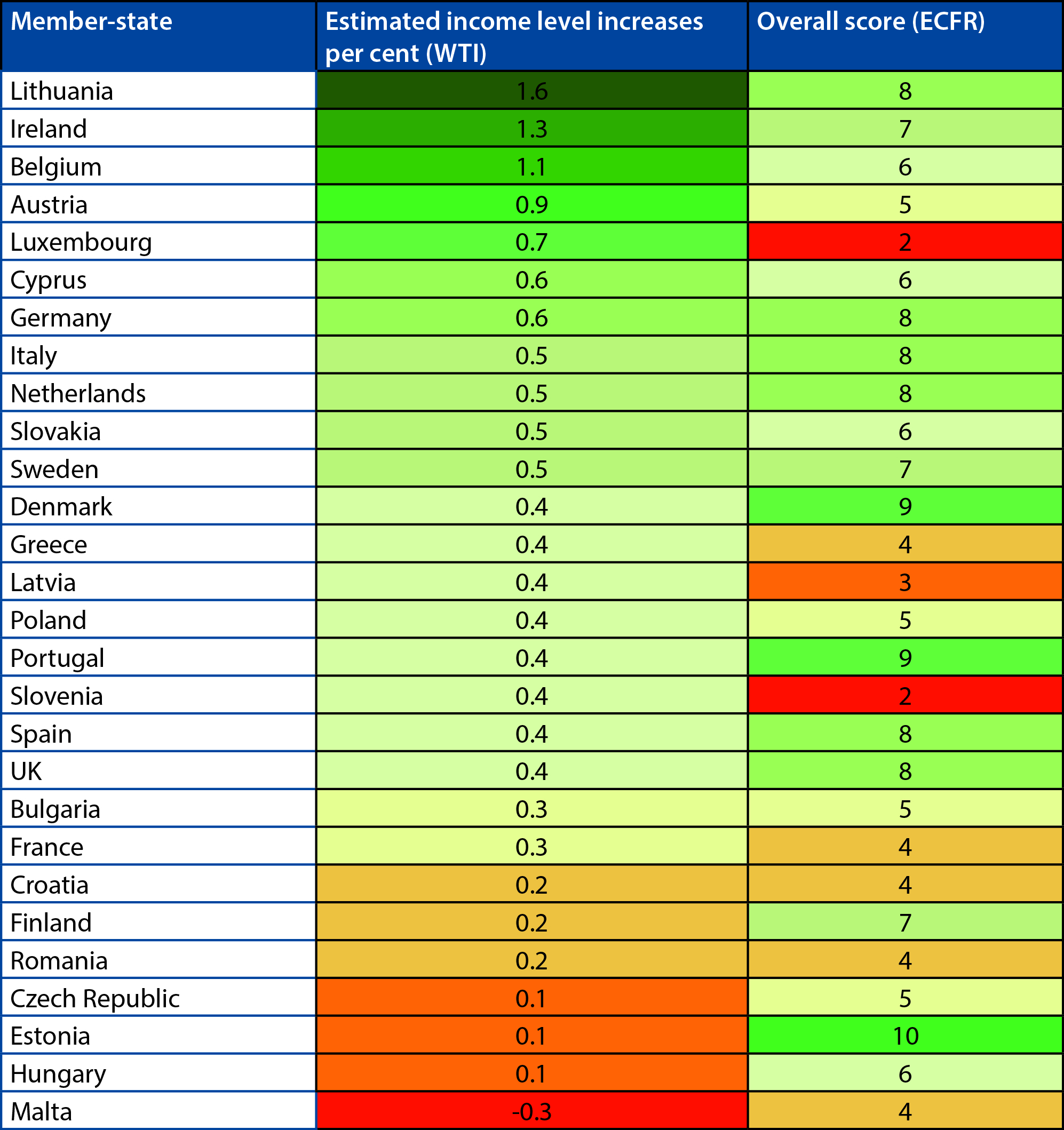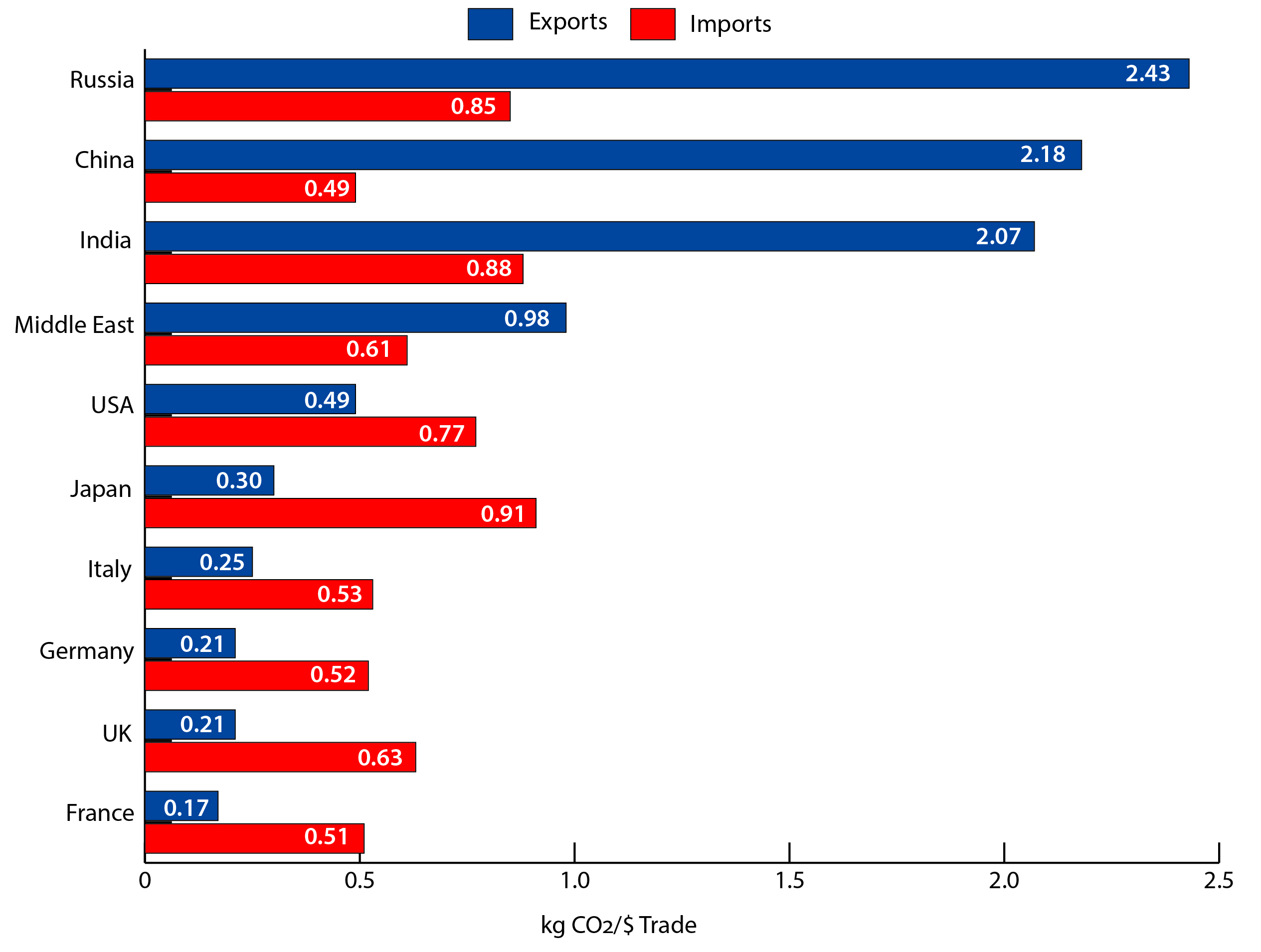
How to save the ideas behind TTIP
European politicians face an increasingly hostile debate on TTIP. To save it, they need to come clean about past trade policies, show how TTIP avoids past failures and improves European regulation, and emphasise TTIP’s global role.
It has been a bad week for the Transatlantic Trade and Investment Partnership (TTIP). Greenpeace leaked negotiation material on May 2nd that contained very little news: while the documents detailed the negotiating positions of the US, they were largely as expected. But that did not stop, for example, Germany’s Süddeutsche Zeitung from claiming that the leaks “go beyond the darkest fears” of TTIP sceptics. Partly as a result of the leaks and the largely one-sided press coverage, German support for the transatlantic deal has fallen further, with 70 per cent expecting disadvantages from it. In other countries, support has also waned. A campaign in the Netherlands has now gathered 100,000 signatures for a petition in favour of a referendum on the agreement. Meanwhile, French politicians felt the need to voice their scepticism more openly, with President Hollande being quoted as saying that “at this stage [of the talks] France says ‘No’.”
TTIP critics are throwing out the baby with the bathwater. Start with the ideas behind deeper US-European trade co-operation. Freer trade and a large Atlantic market can raise productivity and hence income levels. Co-operation between Europe and the US on regulating product and labour markets can help improve those regulations and open the door to higher global standards. Such global benchmarks would provide strong incentives for other countries to follow, and tie themselves closer to the Western model of a market-based economy, democracy and the rule of law.
The core of the anti-TTIP movement will not be swayed by any of these ideas, and will oppose TTIP regardless of what it contains. But there is a European public that is open to a constructive debate about trade. The problem is that policy-makers continue to struggle to explain the ideas behind TTIP. But unless European leaders find a way to convince the broader public of the merits of TTIP, it seems that no European politician, not even Angela Merkel, has the political capital to save the deal.
Policy makers must come clean abt past trade policy failures & show how #TTIP avoids repeating them
The first step is to come clean about past trade policy. Free trade supporters have often downplayed the negative consequences of freer trade – something economists have always acknowledged, though rarely in public. This is now coming back to haunt TTIP advocates. In order to regain the public’s trust, European policy-makers need to openly acknowledge the shortcomings of past trade policies, and show how TTIP will avoid repeating them.
For example, two recent studies found that between 1999 and 2011, the US economy lost 2.4 million jobs because of Chinese import competition, and that those American workers who changed occupation because of increased trade suffered a 15 per cent cut in their real wages. TTIP would not have similar distributional consequences for workers in the EU and the US – job switching as a result of TTIP, for example, is expected to be low. But some countries in the EU will benefit more than others.
Table 1: Economic impact of TTIP on individual member-states

The effects on small and medium-sized enterprises (SMEs) in Europe are also uncertain: SMEs will benefit from easier access to the US market, lower tariffs, common regulation and access to US public procurement. At the same time, a larger market usually favours larger firms, and encourages mergers. It is positive for the economy and the consumer to have larger, more efficient firms able to exploit economies of scale and reduce prices. But European SMEs will have to adapt to stronger competition, expand and invest, or merge – and European policy-makers would need to help them by removing barriers to company growth.
#TTIP won't increase carbon emissions by much, but offers an opportunity to tackle #climatechange
Another example of the potentially negative consequences of trade is climate change. Trade itself increases carbon emissions according to most studies. What is more, consumers in Europe and the US are an important cause of carbon emissions abroad – especially in Russia, China and India whose exports have high carbon content (see chart). TTIP is not expected to increase carbon emissions by much, but it provides an opportunity to tackle the issue of climate change within trade. A robust climate agreement within TTIP would send a strong signal to the European public that the agreement tackles important issues. For example, it could contain plans for a joint Atlantic carbon trading scheme, or joint emission standards for power and transport markets. Even bolder would be to include plans for creating a level playing field for EU and US producers vis-à-vis producers in countries that do not currently price carbon emissions – a highly controversial issue in world trade. One option would be border carbon adjustments, that is, imposing a tax on imports according to their carbon content. At present, the EU is trying to compensate energy-intensive EU producers with free carbon allowances.
Chart 1: The carbon content of imports and exports

The second step to save the ideas behind TTIP should be to establish an open and transparent Atlantic dialogue on how best to regulate product and labour markets for health and safety, environmental standards and workers’ rights. This should include parliaments and civil society, the press and academic exchanges. EU trade commissioner Cecilia Malmström has repeated over and over that she is “simply not in the business of lowering standards”, and the EU negotiation mandate supports her. But the public seems to need further reassurances.
Atlantic regulatory co-operation is nothing new: in the 2009 US-EU Bilateral Aviation Safety Agreement, for example, US and EU regulators agreed to accept each other’s seal of approval for airplanes. Given that Europe and the US have very strong preferences for safe aircraft, it is not surprising that both sides found that the other does a good enough job in ensuring that planes are safe. There will be few European or American citizens who worry about their safety depending on whether they are flying in a Boeing, as opposed to an Airbus. TTIP is about trying to find other sectors in which we share similar preferences.
Contrary to common myths in Europe, the US does not generally have lower standards, but are the natural partner on regulatory co-operation, and Europe could even learn from it.
- Europe would be well-advised to adopt the higher US standards for medical devices. The US Food and Drug Administration’s (FDA) device chief, Jeffrey Shuren, argued undiplomatically in 2011 that "under the EU system, the public are being used as guinea pigs." The FDA later produced a list of dangerous EU devices not approved in the US.
- The EU and the US have similarly strict air pollution standards on average, but standards for different pollutants vary. For example, US standards on nitrogen oxides (NOx) are considerably tougher than in the EU. Considering the 72,000 premature deaths in the EU per year attributed to NOx pollution (the equivalent of 800,000 lost life years annually), the EU should adopt US standards. The recent Volkswagen car emissions scandal also suggests that Europe has a problem with enforcement of pollution regulations, and co-operation with the US could be helpful.
- Not even in agriculture, perhaps the most neuralgic aspect of TTIP for its European opponents, are European standards higher across the board. For example, the US is more relaxed about genetically modified organisms (GMOs) and hormone beef, but also more successful when it comes to preventing the spread of foodborne illnesses.
Europe needs to come off its high horse. Many Europeans claim that the EU has a stricter ‘precautionary principle’ (regulating to avoid a risk even if it cannot be proven scientifically) and the US a more risk-friendly ‘scientific principle’ (regulating to avoid a risk only if scientifically proven). And yet the average levels of precaution in the actual legislation are rather similar across the Atlantic. To convince the European public of the benefits of regulatory co-operation with the US, European policy-makers should assess critically and honestly the shortcomings of EU regulation, and show how those will be improved through TTIP. It would be a painful process of introspection, but useful for the public to appreciate Europe’s scope for improvement.
The US does not generally have lower standards. Europe needs to come off its high horse #TTIP
The final step to save the ideas behind TTIP should be to emphasise its global role. Western values of democracy, accountability, transparency and the rule of law are increasingly under threat, even in Europe’s vicinity. A common Atlantic approach to global trade rules and regulatory standards, combined with the prospect of an open TTIP that third countries can join, would create a renewed pull towards the Western economic model. The deal could enshrine high health, safety and labour standards, requirements for transparent and accountable regulators, and the rule of law. It should at the same time allow aspiring countries enough room to set economic policies such that domestic sectors and industries can develop. While the current plan is to conclude TTIP bilaterally first before opening it up to others, Europe and the US could send a strong signal of TTIP’s openness by inviting key neighbouring countries such as Turkey, Switzerland, Norway, Mexico and Canada as observers and to consult them during the negotiation.
European politicians face an increasingly hostile and one-sided debate on TTIP. But the recent setback also offers an opportunity: to change from defence to offence. There was little public debate in Europe about the goals of Western trade policy in the 21st century before TTIP was conceived. As a result, the public was ill-prepared for the waves of hostile campaigning against TTIP. But the public is also rightfully suspicious of official trade policy, as globalisation has not benefitted everyone. As a start, Europe and the US need to come clean about past trade policy, its successes but also its failures and show how TTIP will avoid repeating the latter. The new EU trade strategy is a good start. Integrating measures to tackle climate change prominently into TTIP would help, too, to convince sceptical Europeans. Finally, both sides need to review their respective regulatory frameworks, and forcefully frame TTIP not as a rushed trade deal but as long-term Atlantic co-operation to improve regulation rather than water it down. For its part, the press in Europe should continue to scrutinise the process, by all means. But it should also be honest and empirical about trade policy, the state of European regulation and the impact of TTIP. It would be a mistake if legitimate public concerns over some aspects of TTIP ended up scuppering the entire project.
Christian Odendahl is chief economist at the Centre for European Reform.
